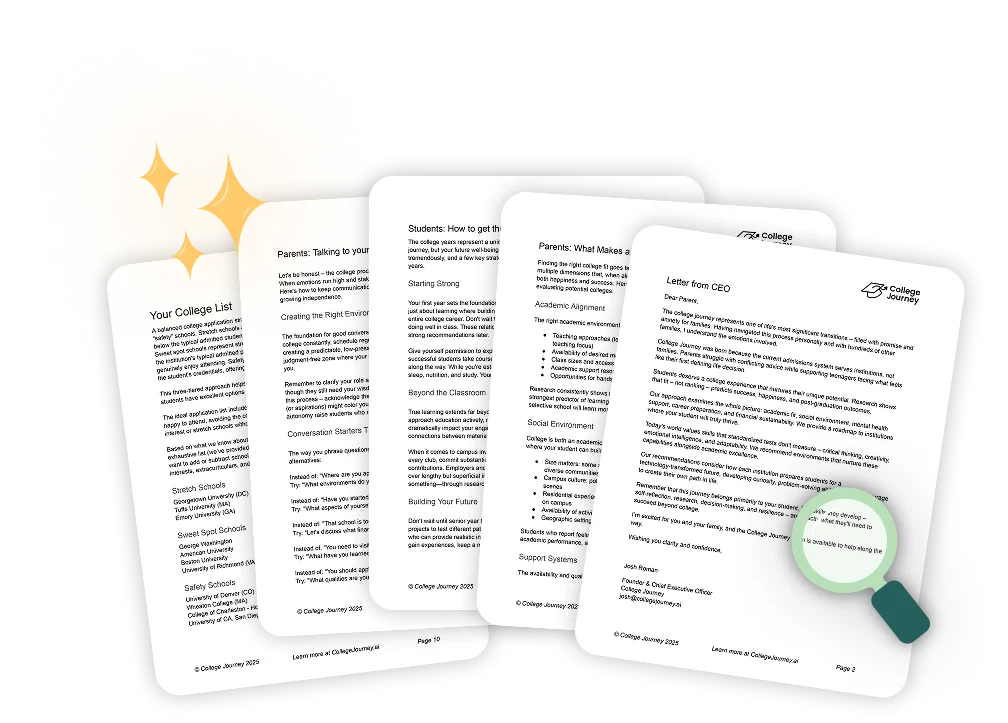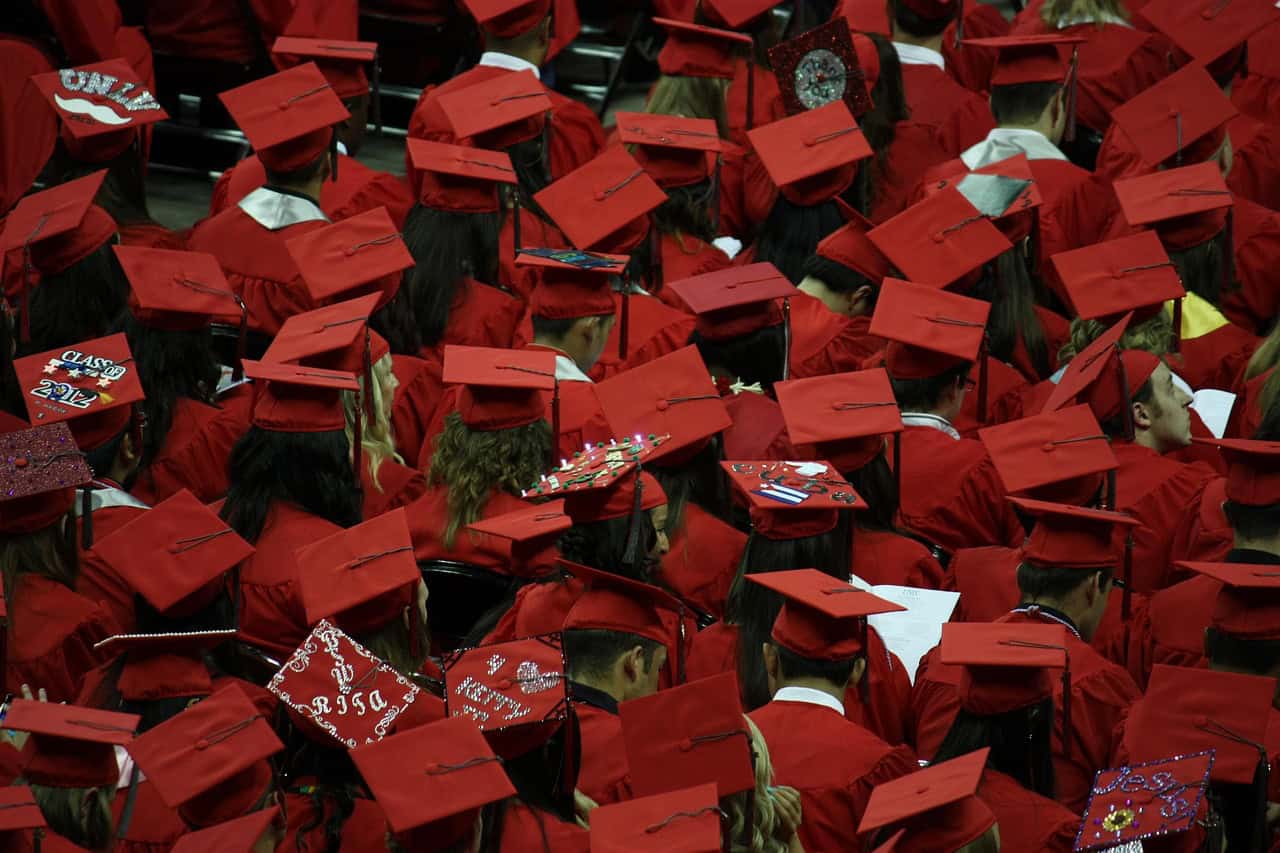When it comes to college admissions, there’s more to it than just grades and test scores. One key factor you might not know about is “yield.” Yield is the percentage of admitted students who enroll at a specific college.
But why is this so important? Colleges rely on yield rates to decide how many students to admit and how to manage their resources. Understanding yield can reveal a lot about a school’s priorities and how competitive it is. Let’s see what yield means, why it matters, and how it could affect your college choices.
Prefer to listen? Try our short audio overview:
Key Takeaways
- Yield is the percentage of admitted students who choose to enroll.
- It reflects how desirable a college is to its admitted students.
- Yield helps colleges plan class sizes and allocate resources.
- It differs from the acceptance rate, which measures selectivity.
- Colleges use yield to decide how many students are admitted off the waitlist.
Why Yield Matters in College Admissions
Understanding yield—the percentage of admitted students who choose to enroll—is crucial in college admissions. Here’s why it matters:
Enrollment Management
Colleges aim to admit the right number of students to fill their classes without overextending resources. Accurate yield predictions help them balance class sizes and maintain campus resources effectively.
Institutional Prestige
A higher yield rate often reflects a school’s desirability. For instance, top-tier universities like Harvard boast yield rates of around 84%, indicating that a significant majority of admitted students choose to enroll.
Financial Planning
Yield rates influence financial planning, including tuition revenue projections and scholarship allocations. Accurate yield predictions ensure financial stability and the ability to offer competitive aid packages.
How Colleges Use Yield to Shape Their Class
Yield plays a big role in how colleges plan their incoming class. Here’s how colleges use yield during the admission process.
How Yield Influences the Admissions Process
Colleges rely on past yield rates to estimate how many students will enroll. For instance, if a school wants 1,000 new students and typically has a yield rate of 50%, it needs to admit around 2,000 students. This helps colleges avoid over- or under-enrollment, ensuring they have the right number of students to match resources like housing and faculty.
Why Colleges Care About Yield When Planning Their Class Size
Yield rates also reflect a school’s popularity. A higher yield signals that admitted students view the school as a top choice.
For example, Harvard boasts a yield rate of over 84%, while many other colleges average closer to 30%. This number isn’t just about prestige—it directly impacts financial planning. Colleges use yield rates to predict tuition revenue and allocate scholarships or resources efficiently.
What Colleges Do to Improve Yield
Overwhelmed by college research?
Let us help save time and find the perfect schools for your family.
To improve their yield, colleges use several strategies:
- Early Decision Programs: Schools encourage students to commit through binding Early Decision applications. These programs secure a student’s enrollment early and significantly boost yield.
- Tracking Interest: Colleges pay attention to “demonstrated interest,” like campus visits, attending virtual info sessions, or communicating with admissions. Students who show more interest are more likely to enroll.
- Financial Aid Incentives: Offering generous financial aid or scholarships helps colleges stand out to admitted students. Schools know that affordability can often be a deciding factor.
Factors That Impact College Yield Rate
Understanding what affects a college’s yield rate can give you a clearer picture of the college admissions process. Here’s what plays a role:
What Affects Yield and Your Chances
Several factors influence a college’s yield rate:
- Prestige: Colleges with strong reputations often have higher yield rates. For example, Stanford has a yield rate of about 80%.
- Location: Schools in attractive areas like big cities or warm climates tend to draw more students. This boost in desirability often increases their yield.
- Financial aid: Generous aid packages or scholarships make schools more affordable, which can sway admitted students to enroll.
How Your Application Can Influence Yield
Your behavior during the application process can impact how colleges view your likelihood to enroll:
- Showing interest: Colleges notice when you engage. Visiting campuses, attending virtual sessions, or emailing admissions offices shows you’re serious. Some schools even track this interest to inform their decisions.
- Early decision applications: If you apply through a binding Early Decision program, colleges know you’re fully committed if admitted. This strengthens their confidence in your enrollment.
You can also take help from your family and friends when applying to college. In case they need to brush on the information, here’s a quick guide to the entire college admission process for parents.
Impact of College Reputation and Location on Yield
College reputation and location significantly influence yield. Schools with strong rankings or a well-connected alum network tend to attract students who are eager to attend. It often results in higher yields.
Similarly, location plays a crucial role. A campus in a bustling city or near industry hubs is more likely to appeal to students than one in a less accessible area. Favorable climates and nearby opportunities further enhance a school’s desirability and drive up enrollment numbers.
Yield vs. Acceptance Rate: What’s the Difference?
Yield and acceptance rates may sound similar, but they measure very differently.
The acceptance rate is the percentage of applicants a college admits. For example, if a college receives 10,000 applications and accepts 1,000 students, its acceptance rate is 10%.
On the other hand, the yield rate measures how many of those accepted students actually enroll. If 600 out of the 1,000 admitted students decide to attend, the yield rate would be 60%.
How Both Yield and Acceptance Rates Affect Admissions
Colleges rely on both numbers to manage admissions. A low acceptance rate can make a school appear more selective, which boosts its reputation. At the same time, a high yield rate helps colleges predict enrollment and manage resources like housing and class sizes. These numbers provide insight into a school’s admissions priorities and its popularity among students.
How to Use Yield to Your Advantage in the Admissions Process
The yield rate tells you how likely students are to enroll once admitted. Understanding yield can help you craft a stronger application and focus on colleges that fit your goals.
How to Leverage Yield Data for Your College Strategy
Yield rates reveal a lot about a school’s priorities. Highly selective schools, like Harvard and Stanford, have yield rates over 80%. These colleges want students who show they are fully committed. If you’re applying to these schools, visiting campus, applying to Early Decision, or attending their events can strengthen your application. It shows them you’re serious about enrolling.
There’s more room for flexibility for moderately selective colleges, with yield rates between 50% and 70%. For example, Brown University has a yield rate of 63.25%. Demonstrating interest still helps, but these schools may be more open to admitting a wider range of students, especially those with strong academic or extracurricular profiles.
Public universities, often with yield rates around 30%, admit larger numbers of students to ensure they meet enrollment goals. Focusing on creating a standout application—whether through unique achievements or personal essays—can set you apart from the crowd.
You can use yield data to prioritize your engagement with colleges. If a school values “demonstrated interest,” make sure you visit their campus or participate in their online sessions. Stand out for schools with lower yields by showcasing your strengths and why you’re a great fit.
How Colleges Try to Boost Yield
Colleges aim to enroll a higher percentage of admitted students to maintain stability and enhance their reputation. To achieve this, they employ several strategies.
Common Strategies Colleges Use to Increase Yield
Here are a few common strategies colleges can use to increase your yield.
- Demonstrated interest: Colleges track your engagement, such as campus visits, attending online events, or responding to emails, to predict how likely you are to enroll.
- Early decision programs: These binding agreements ensure that you commit to attending if admitted, which directly boosts yield rates.
- Enhanced financial aid packages: Schools offer competitive scholarships and financial aid to make enrolling more affordable and appealing.
- Personalized communication: Tailored emails, calls, or outreach from admissions staff help create a sense of belonging, encouraging you to enroll.
- Engaging campus visits: Campus tours, open houses, or admitted student events let you experience the school firsthand, often influencing your final decision.
How Campus Visits Can Affect Yield
Campus visits are one of the most effective ways colleges improve their yield. You can experience the environment, interact with current students, and envision yourself there by visiting. These experiences often help you solidify your decision. Research shows that students who attend a campus tour or event are significantly more likely to enroll.
Conclusion
Yield is more than just a statistic—it shows how colleges make decisions and what they value. By learning about yield, you can better understand a school’s priorities, its appeal to students, and how it builds its incoming class. This knowledge can help refine your college list, strengthen your application, and make informed enrollment choices.
About College Journey
Navigating college admissions can feel overwhelming, but College Journey is here to help. With Alice, your AI college counselor, you’ll understand how colleges evaluate key factors like GPA, test scores, extracurricular activities, and essays.
Alice is ready to assist if you’re unsure how your academic achievements or personal qualities impact your application, need guidance on standing out in activities, or want expert tips for writing a standout personal statement.
From personalized recommendations and college comparisons to tools that track your progress, College Journey simplifies every step of the process. And the best part? Signing up is completely free!
FAQ
Does a high yield rate mean a college is better?
A high yield rate shows that many admitted students choose to enroll, but it doesn’t necessarily reflect the quality of education or the student experience.
How does yield affect waitlisted students?
Yield impacts how many students colleges admit from the waitlist. Colleges turn to the waitlist to fill spots if fewer admitted students enroll than expected.
Is yield important for all colleges?
Yes, but its significance varies. Highly selective schools focus on yield for prestige and planning, while less selective colleges use it to maintain stable enrollment.
What is “yield protection”?
Yield protection is when colleges deny or waitlist highly qualified applicants they think won’t enroll. This helps them maintain their yield rate.
Do colleges with high yields offer less financial aid?
Not necessarily. While some popular colleges may offer less aid, many still provide strong financial packages to attract diverse and talented students.




